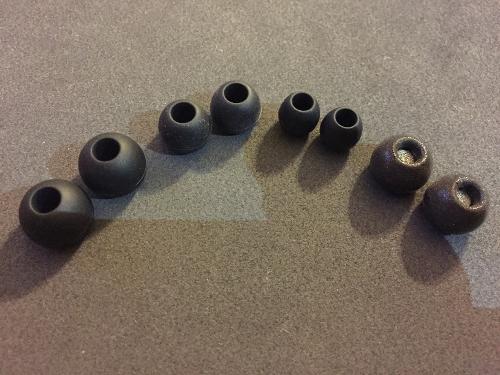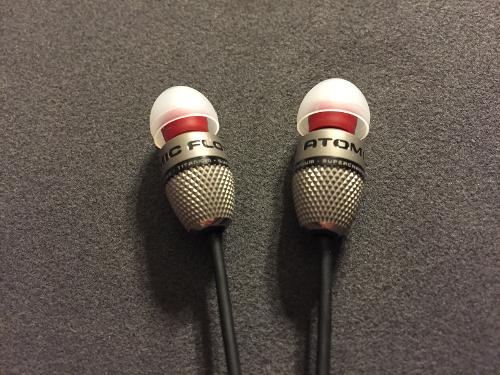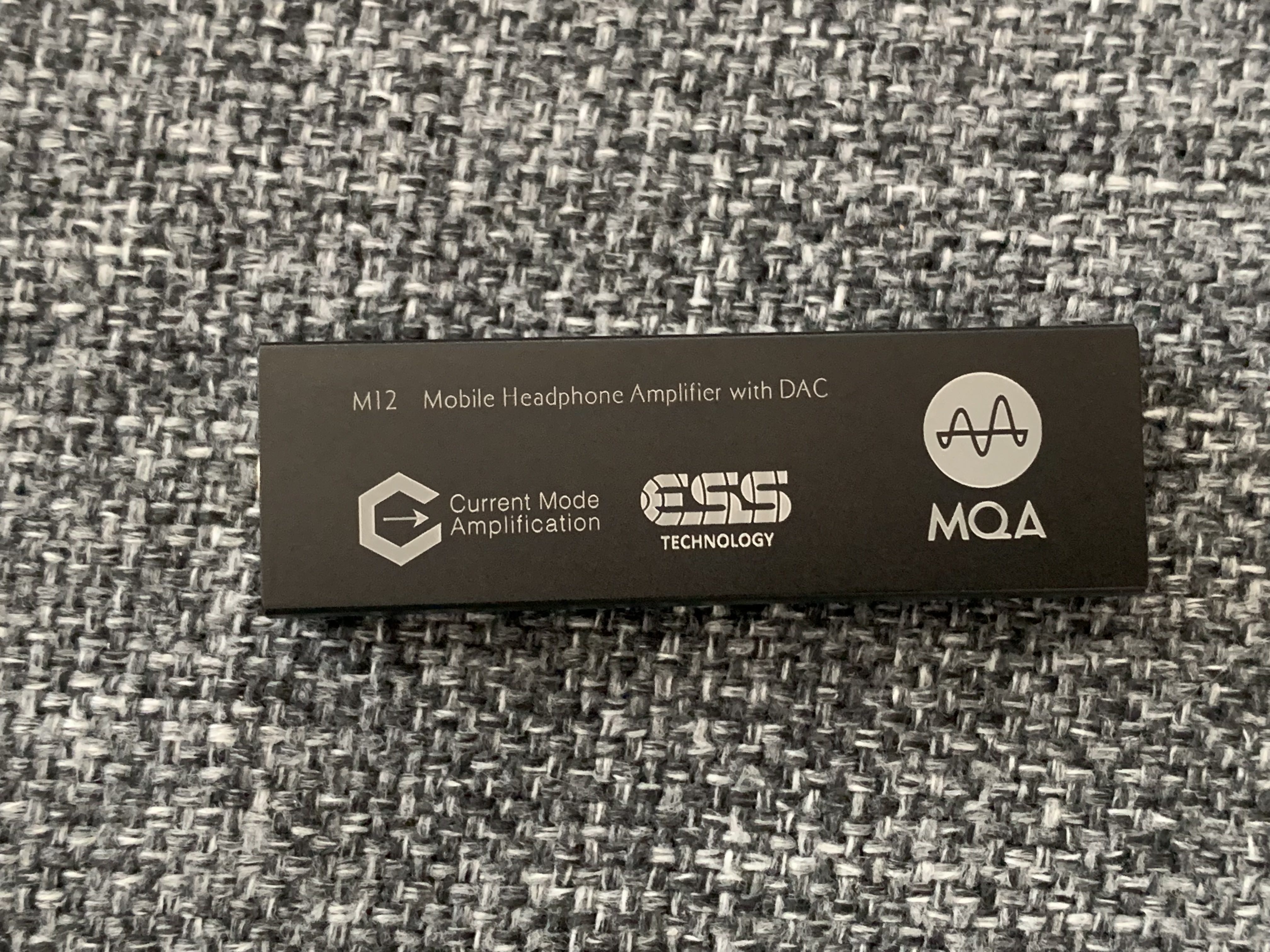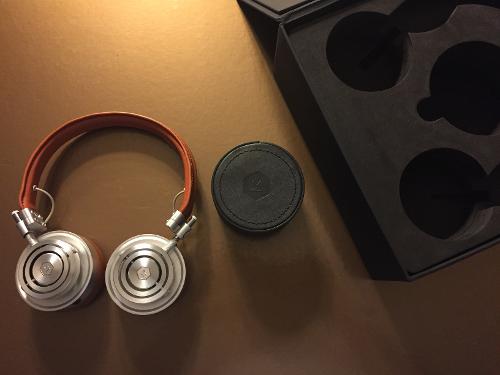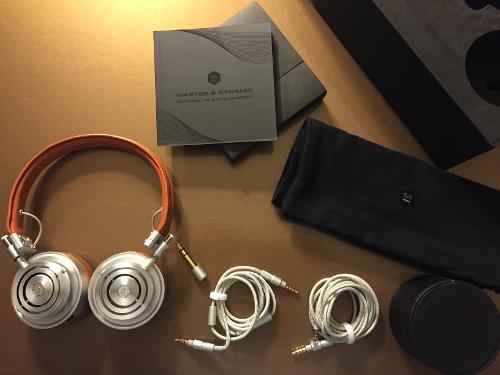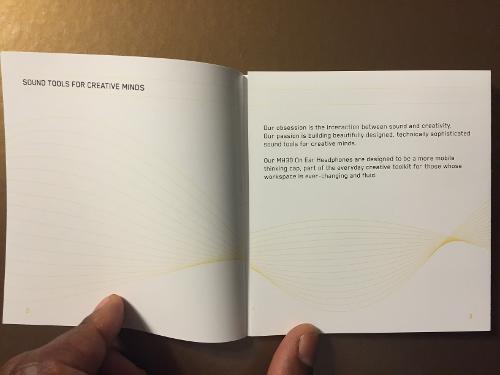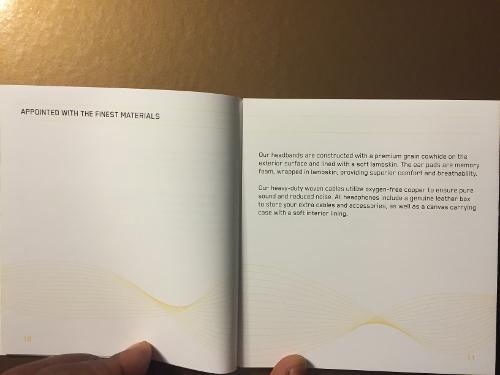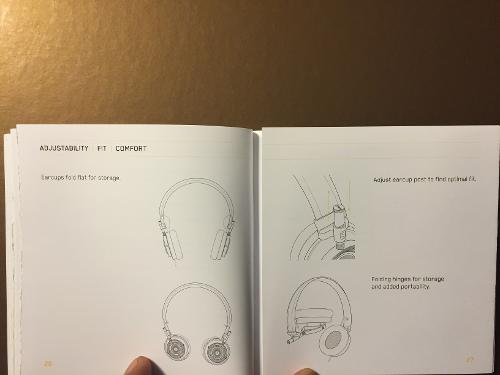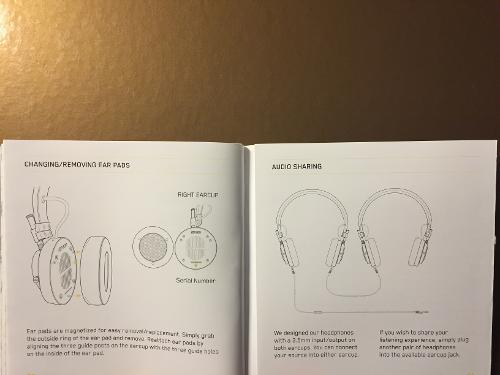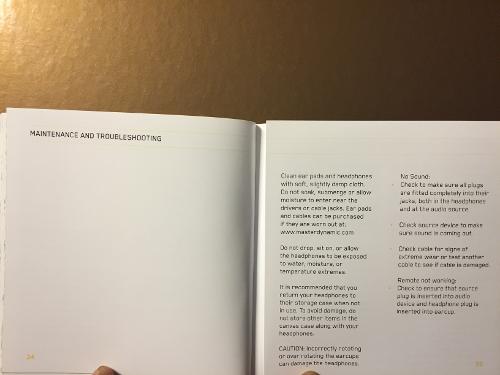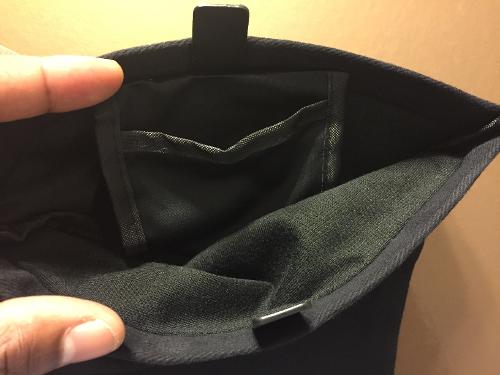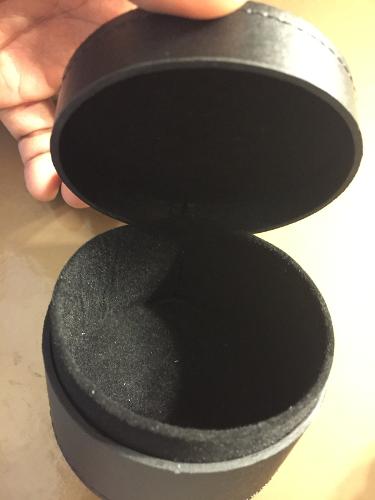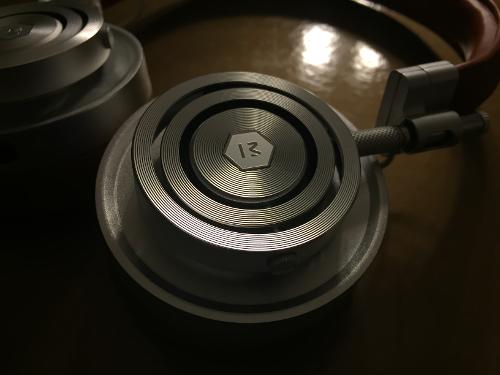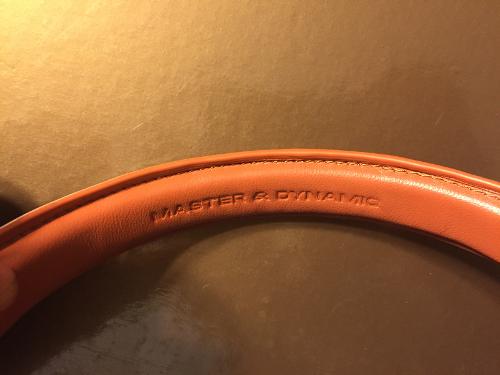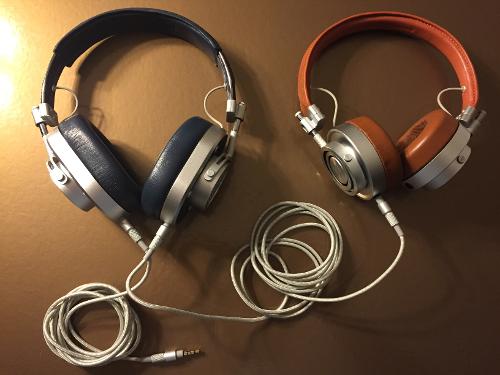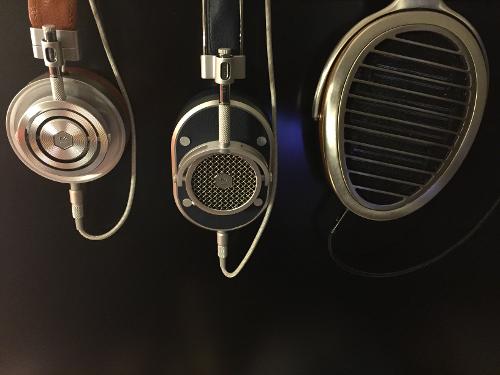Review: Grace Design x Massdrop m9XX DAC/Amp
Have you ever experienced a day where you knew it went well, but did not know how much of an effect that day would have on your life? This was the case the day that I spoke with Massdrop's Will Bright about a couple of amp-type products that they were going to launch in the near future. One was a small (very small), but powerful DAC/amp called the CEntrance DACport Slim, and the other was an amp that was from the Colorado, United States-based company Grace Design. I have conversed with Will on multiple occasions and in person, and I can comfortably say that his collaborations are exemplary and intriguing. Usually what he likes, I like as well. This comes back to the days (not too long ago), when all that we talked about were our Shure SE846 earphones with vigor and excitement. Wanting to learn more about Grace Design and amplification in general, I graciously accepted the offer to share my opinion. I have experience with most aspects of high-fidelity audio, but haven’t owned any significant DAC/amp in my life. This was until I received a box with the words “GRACE DESIGN” ablaze on it. Curious to find out what was inside, I opened it up. My jaw dropped and my eyes widened. Behold…
The Grace Design x Massdrop m9XX DAC/Amp
Clockwise starting at upper-left: USB type A to USB type B micro cable 6', 2A power adapter, USB type A to USB type B micro cables 10', m9XX
Front of m9XX
Front of m9XX
Volume control rotary encoder
Rear of m9XX
Underside of m9XX
Audio equipment used in the review
DAC/Amps
CEntrance DACport Slim: $99 shipped in the United States
Grace Design x Massdrop m9XX DAC/Amp: $499 shipped in the United States
Headphones
HIFIMAN HE1000: $2,999
Master & Dynamic MH30: $349
Master & Dynamic MH40: $399
Sennheiser Momentum 2.0 AEi: $349.95
Earphones/IEMs
Puro Sound Labs IEM500: $199.99
Sennheiser Momentum In-Ear: $99.95
Shure SE846: $1,000
Sensaphonics Custom Sleeves: $150 (used with Shure SE846)
Third-party cable
Headphone Lounge FBI Reference Silver Litz Cable (MMCX) = Price varies
Sources
iPhone 6 (Space Gray, 128GB): $849.99 or $399.99 with a 2-Year Contract
Questyle Audio QP1R Golden and Space Gray: $899 USD
Samsung S5 (Shimmery White): $552.00 with Verizon
Software Applications Used
JRiver Media Center 20: $49.98
Sound Level Analyzer: $4.99
TIDAL HiFi – Lossless: $20 per month or $10 with student discount
Adapter for 1/4 inch headphone inputs
iMBAPrice Premium High Quality Adapter STEREO GOLD Plug 1/4" (6.3mm) Male to 1/8" (3.5mm) Female - Gold Plated - Lifetime Warranty (I use a similar adapter): $5.09
If you have read my earlier Head-Fi posts (mostly in the Shure SE846 Impressions Thread), I say that the iPhone is enough for an IEM, and that I am in no need for a DAC/amp. Being able to attend various meets and listening to a plethora of awesome sounding DAC/amps, my position started to change slightly. I still feel that an iPhone sounds great. However, having that extra kick, clarity and overall audio coherency that a properly implemented DAC/amp can provide is paramount. This is especially true when you are dealing with the task of driving less efficient headphones.
I would like to share my experience with the m9XX over the time that I have been able to own this graceful, yet powerful DAC/amp.
I feel that since there are only 500 units being dropped on Massdrop here: https://www.massdrop.com/buy/grace-design-x-massdrop-m9xx-dac-amp, I should explain why you should purchase this DAC/amp. This is one of my favorite sounding DAC/amps regardless of form-factor and price that I have listened to. Once you factor in the form-factor, price that is not exorbitant, as well as the exclusivity of owning a limited-run (possibly) device, you owe it to yourself to give the DAC/amp a shot – not just a listen…but a purchase. What’s great is that you can buy the m9XX and not love it. You can then give the m9XX to a friend, family member or audiophile/music lover as a gift, and as a result, they will adore the sound that the Grace Design DAC/amp effortlessly produces. I call the m9XX a “Portable Desktop Solution”, or “PDS”, respectably.
More about the PDS moniker, why call it that?
Portable – powers IEMs with the linear volume selection, meaning from “0.” (or ½/.5) to about 50 (with a sensitive IEM such as the Shure SE846) the volume rises very gradually. The m9XX powers most all headphones with some serious power at the higher numbers.
Desktop – emits a dedicated desktop/quality (or better) sound, which is amazing for its miniscule dimensions. Headphones get VIP treatment, and IEMs get VIP treatment as well, as both are taken care of with the utmost of affection.
Solution – this is a portable desktop solution for higher powered phones like the Samsung S5, computers, or anything that utilizes a lineout or optical out. The solution is an immensely high-fidelity sound in the palm of your hand that you can transport, and as a result, is simply marvelous.
Let's get connected
When I first connected the m9XX, I got absolutely no volume from my HE1000. What I did not know until I realized after a few minutes, was that even having the volume at “40” does not do much good for the average difficulty to drive HE1000. The volume stays at a low volume up to about “50” for sensitive IEMs, which is an amazing feature the m9XX offers. I usually keep the volume low when listening to a DAC/amp for the first time, since I have experience with volumes higher than normal when I try out the DAC/amp for the first time (for instance, listening at a meet), so having the volume very low, and turning it up was not helping at all. As soon as I “went for it” and turned it up to the 70’s and 80’s, did I start to hear any substantial volume. Once I was able to hear the music, the volume escalates very quickly, and with aplomb. The m9XX is able to power difficult to drive headphones, as it has more power than my QP1R (which does well with difficult to drive headphones) and the DACport Slim (which also powers headphones well despite its diminutive size).
Keep the music playing
As mentioned in the manual, if you connect and sometimes disconnect the headphone from the m9XX while music is playing, the m9XX will show “OC”, which means “Over Current”. The internal processor will mute the audio and momentarily shut down the audio supplies to protect the m9XX from damage and to also keep the m9XX from drawing excessive current from your computer. When the m9XX shows “OC”, the volume will be muted for several seconds, and then will turn back on.
I experienced "OC" during these situations:
- Unplugging/plugging in earphones/headphones at higher volumes.
- Anytime the m9XX was playing at a high volume at approximately 90s and higher with headphones plugged in (never tried with earphones because anything “90” and above can damage the earphones since the volume output is exceedingly loud).
- Using only the USB input from a computer will cause the m9XX to “OC” while very loud music is playing at approximately 90 and higher (Low Power mode). Adding in the external power source (via “5V, 2A" USB input – High Power mode) allowed the m9XX to reach the entire volume range (“99.”) with ease and does not “OC”.
- Muting the volume before plugging and unplugging in the headphones/earphones during Low and High Power modes made it so I would not experience “OC” at all.
Higher power devices should work
I tried to get my iPhone 6 connected to the m9XX via Apple CCK, USB hub and outlet power/external battery charger, to no avail (keep reading, solution below):
However, I spoke with a m9XX owner and friend @HiFiGuy528, and he was able to get his iOS devices (iPhone 6 and 6+, etc.) working with his Cute USB 2-port hub! It can be purchased here: http://www.amazon.com/Cute-USB-2-Port-Splitter-Black/dp/B00FJG5T4W/ref=lp_7583942011_1_1?srs=7583942011&ie=UTF8&qid=1445921860&sr=8-1. I purchased one in black, and it arrived and works with the iPhone 6 without any issue. Here's the setup:
Cute USB Mini 2-port USB 2.0 Hub SplitterSide view
Showing 2 USB ports
Connected to Apple CCK

iPhone 6 to Apple CCK to Cute USB Mini to USB A/USB B to USB input; USB A/USB B to power outlet
iPhone 6 to Apple CCK to Cute USB Mini to USB A/USB B to USB input; USB A/USB B to external battery charger (Anker PowerCore+ 13400mAh external battery charger shown)
Close-up angle of same connection above
Connection update: With the 0008_DFU m9XX firmware update, I was not only able to get the iPhone 6 to connect on it's own (via power source as well), without the need of a USB add-on such as the Cute USB Mini 2-port Hub, but I was able to get the m9XX (using Windows 7 Ultimate) to set as the default automatically when it's plugged in each time! Very happy with the update:
iPhone 6 to Apple CCK to USB A/USB B to USB input; USB A/USB B to external battery charger (Anker PowerCore+ 13400mAh external battery charger shown) and IEM500
iPhone 6 to Apple CCK to USB A/USB B to USB input; USB A/USB B to external battery charger (Anker PowerCore+ 13400mAh external battery charger shown) and HE1000
I was able to get my friend and Head-Fier @Netforce's Samsung S5 working via S5, USB to USB mini cable and external battery charger:
TOSLINK optical input
I wanted to see how optical would fare with the m9XX, so I connected the QP1R to the m9XX optically, using a TOSLINK optical adapter with the optical cable for the QP1R, connected to the m9XX.
TOSLINK optical cable adapter and optical cable
TOSLINK optical adapter connected to optical cable
TOSLINK optical connected to QP1R

TOSLINK optical from QP1R connected to m9XX

“Dropped” Massdrop m9XX’s will have the updated firmware that will silence the music when a file over a 96kHz PCM digital audio signal attempts to play via optical.
The sound from the HE1000, QP1R and m9XX was sublime, and was highly resolute and utterly transparent. I would say the presentation was such a rewarding experience that you would want to listen to just one more track.
Family game night
I brought some of my audio equipment for my family to listen to.
The only person to listen to the m9XX that night was my younger brother.
My brother listening to JRiver + HE1000 + m9XX
My brother is interested in video games, computers and music, but not necessarily higher-fidelity or more expensive equipment. He was game to listen to the m9XX and share with me (and now, you) his thoughts.
Here's my brother's thoughts after listening to a few tracks from Tidal, HE1000 and m9XX: “Very crisp and clear. You know the “Five” gum commercial? You are surrounded by the vibrations, and it feels like you are there. It feels like you are surrounded by the music.”
After listening to Logic – Like Woah via Tidal, Sennheiser Momentum 2.0 AEi and m9XX, he said it sounds like digital surround. He says he that can hear the drums behind him.
Next up is the MH40 same track – he says it sounds almost like the Momentum – good!
Finally he takes a listen to the MH30 – he likes the bass on these. “One thing that stood out was the bass. It really stands out. Good sound. More compact than the others.”
Great, now let’s go for a comparison. I played a song that was melodic, popular, and just a fun listen for my brother to make comparisons – Kings Never Die from Eminem and Gwen Stefani. He listened to both the m9XX and QP1R on the Momentum 2.0 AEi, playing the same track at around the same volume, calibrated via Sound Level Analyzer. He preferred the Grace Design amp sound compared to the Questyle player’s sound. He said the Momentum 2.0 AEi's sound with the m9XX sounded very quiet and said with the QP1R it sounds like you know you are wearing headphones.
Next up, the HE1000 is ready for the comparison. He says that there isn’t as much interference or background noise with the m9XX than the QP1R has. He articulates: “You know when you are shopping for TV's and the color black that is blacker determines the better TV, same way with the sound of the music as well. When there is more silence on the quieter parts the better it sounds. With the amp I think it sounds pitch black with regards to background noise.”
Ray Charles & Count Basie Orchestra - Oh What a Beautiful Morning is the next track that is being compared that sounded amazingly graceful (no pun intended, or maybe, who knows?) with the HE1000 and Grace Design DAC/amp. The next song that I played was a 320kb song, Ed Sheeran's Bloodstream, and my brother thought it sounded great. He iterates: “Sounds so good for being a lossy file. Can easily mistake it for a song of a higher bitrate. Very clear.”
Overall, my brother thinks that the DAC/amp is worth it for the price for audiophiles.
Notable features
Low and High Power modes, which is great because you do not have to depend solely on High Power mode/outlet power, as using Low Power mode/USB and an external battery charger makes the m9XX truly portable.
The TOSLINK optical and RCA output gives you another way to enjoy your music – via power amp or powered speakers which is always welcome.
Two headphone outputs makes it so you and a friend can listen to the same song. What I do if I know there is a “mismatch” with a headphone/earphone such as one requires more volume than the other; I will only match near efficient pairs. For example, I can pair the easy to drive Sennheiser Momentum 2.0 AEi with the very easy to drive Shure SE846 in respectable inputs. I can also pair a little bit more difficult to drive HE1000 with the more difficult to drive IEM500 in respectable inputs.
Crossfeed circuitry is a welcome option as it can be turned on or off. I keep the crossfeed on.
The volume control is the overall best looking and feeling rotary encoder that I have ever felt. This is the truth. The volume control is the truth. The tactile feedback is immeasurably satisfying. You turn the rotary encoder either way to turn up or down the volume. You press it down with a satisfying “click” sound to mute the audio (and negate ever experiencing “OC”!) Once you keep the rotary encoder down for two seconds, you will enter the m9XX’s options, turning the rotary encoder either way to change the settings or press down the rotary encoder to change the selected setting.
The 7-segment display is bright, large enough and easily legible in bright light as well as complete darkness. You also have the option to turn off the illumination via “Display Dimmer Mode” setting (d.d. [dim] or dd [not active]).
The power up level is a thought out option; because you can set exactly what volume step you want the m9XX to start up every time. I keep mine at “0” when it powers up.
The DAC filter utilizes four filter response modes, which are:
F1 = Sharp roll off, linear phase
F2 = Slow roll off, linear phase
F3 = Sharp roll off, minimum phase
F4 = Slow roll off, minimum phase
Here's more information regarding the filters:

To read more about the AK4490 DAC, you can peruse through this link: http://www.akm.com/akm/en/product/featured/velvetsound/.
I chose the default, which is the F1 = Sharp roll off, linear phase filter response mode.
0.08 Ω of output impedance – black backgrounds are par for the course.
The chassis and every part of the m9XX are made with high quality anodized aluminum and steel what looks to me like aircraft-quality materials. Yes, it looks and feels that wonderful.
Power comparisons
My method of dB reading:
- Perform tests in a quiet room or as quiet area as possible.
- Set Sound Level Analyzer (Z frequency weighted) settings.
- Use stock cables for tests.
- Place microphone of iPhone 6 very close to the left earcup on all tests.
- Make sure earcup is open and not laying on an object.
- Run DAC/port Slim and m9XX at full volume (High gain, "90.").
- Use -3 dBFS 192 kHz pink noise track.
- A screenshot is taken of Sound Level Analyzer's "Lmin (dB)", "Leq (dB)" and "Lmax (dB)".
All measurements have been created with no EQ utilized.
I calibrated both DAC/port Slim and m9XX to emit the HE1000 around 81 dB with the Sound Level Analyzer (Z frequency weighted) as both DAC/amps were loaded with the same -3 dBFS 192 kHz pink noise track for sound quality comparison tests. The HE1000 + DACport Slim needed about 1 1/2 full volume dial sliding upwards on High Gain and the HE1000 + m9XX needed "82." to reach as approximate the same sound level/volume as possible.
Max volume of the DACport Slim and HE1000 using Sound Level Analyzer (Z weighting) and -3 dBFS 192 kHz pink noise track
m9XX + HE1000 with 1/4 to 1/8 in adapter
m9XX + HE1000 with 1/4 in cable
Sound impressions
I think the sound of the Grace Design DAC/amp is balanced and not overly or artificially boosted in any area of the frequency spectrum. The transparency of the presentation is apparent and immediate. It reminds me of food that tastes so invigorating, but hits the spot, is not too sour, not too salty, not too sweet, and not too spicy. It tastes just right. Compared to the DACport Slim, the m9XX is more coherent, resolving, clear and is able to retrieve micro, macro, and major detail in a more preferable manner. The DACport Slim has more overall bass in its presentation, and the m9XX is more balanced and natural in its presentation.
Disclaimer and hearing factors
The earphone and headphone reviews (brief or more in-depth) are mainly for anyone wanting a point of reference regarding how they more or less pair with the m9XX.
We all hear differently, and our experiences with regards to how our interpretation of what we hear vary greatly. Some factors that come to mind (and not limited), are:
Your inner ear and skull’s overall composition: http://www.smithsonianmag.com/smart-news/the-unique-vibrations-of-your-skull-affect-how-you-hear-music-654940/?no-ist.
Hearing loss as we age, also known as presbycusis: https://www.ohio.edu/news/months/nov1998/111.html,https://en.wikipedia.org/wiki/Presbycusis.
Heredity, noise trauma, dietary habits, smoking, hypertension, atherosclerosis, are other factors that affect people’s overall hearing ability.
Select headphone/IEM pairings
Shure SE846 + SCS
Tight. Punchy. Spacious. Immersive! The SE846 is a fabulous combination with the m9XX. I personally do not detect a low treble rolloff. I am using the SCS + Ted’s Silver Litz, plus black filter mod/white filter, so those mods/add-ons/replacements more than likely contribute to the veil of sorts being lifted. Wow…wow. I am listening to Seal’s Life On The Dance Floor via Tidal and m9XX, and it sounds so sweet and resolving. Every bit of the sound spectrum, be it bass, midrange, treble, spatial capabilities simply ceases to amaze me. The SE846 + SCS + m9XX are coherent and resolving without clutter, without mess. I can go on and on, but this combination is a winner for those that want a clear and coherent sound with the extra bass kick for good measure.
Puro Sound Labs IEM500
When I met Jim Noyd at The Source A/V meet not too long ago, I just thought he would let me listen to the IEM500 as it looked pretty good on their website. He gave them to me. No mention of giving a review on them. I wouldn’t have either more than likely if I didn’t like them, but these IEMs sound so lovely, that it would be a disservice not to say anything publicly about them. A review will more than likely be forthcoming, but I need to say some thoughts about how they pair with the m9XX. In one word: lush. The overall sound is very rich, and I can tell the double dynamic drivers are working in full unison. The bass is obvious, but not overbearing. The midrange is liquid smooth, more like a vanilla shake from In-N-Out. If too many food references are getting to you, let me know – but these foods are what comes to my mind. The treble is laid-back and not harsh in the least. The spatial capabilities, mainly soundstage, imaging and detail retrieval, are natural and present. Intimate, yet spacious, are the words I would describe the IEM500 and m9XX combination. Worth a listen, and worth purchasing, as I saw the prices of these on Amazon – wow!
Sennheiser Momentum In-Ear
This is the world premiere Momentum In-Ear in black chrome. When I first listened to Jude’s maroon colored Momentum In-Ear for the first time, I asked him “How many drivers are in this?” He said “Just one”. I replied “Wow, I’ve got to get me one of these!” Thank you to Mr. Mahmood for supplying me with an IEM that I liked from the start, in exchange for my opinion. I am simply enamored by this mighty single dynamic driver IEM. I loved the maroon color of the original Momentum, but Sennheiser has hit it out of the park with a blingy, yet classy iteration of the popular Momentum In-Ear. The m9XX turns this into a more balanced IEM. The prominent midbass presentation still remains, but what a sublime midbass the Momentum In-Ear emits. The entire presentation is warm, but gooey, like a tasty Cinnabon. If you haven’t experienced a Cinnabon yet, you need to. Okay, back to the fabulous sounding Momentum In-Ear. The tonal balance of the midrange and treble is detailed, yet suave all at the same time. Soundstage and imaging are not the strongest suits, but the crossfeed of the m9XX does an exemplary job of making the spatial capabilities of the Momentum In-Ear blossom to the best of its abilities. A great listen and warm sounding IEM, but opens up when paired with the m9XX.
Sennheiser Momentum 2.0 AEi
This headphone is already balanced and dignified via an iPhone. Paired with the m9XX, the Momentum 2.0 AEi is a capable headphone. I would like to thank Mr. Mahmood for sending over the brown version to me for my honest opinion. What I like is the cups actually look like a dark metallic bronze color, very subtle, yet stylish. If you check my earlier posts on Head-Fi, I posted that I did not like the original Momentum’s sound. The update is more my cup of tea, to say the least. I will not say exactly which headphone Sennheiser I do not like as much as the Momentum 2.0 AEi, but what I will say is that this headphone is relatively new, and I thought that I would like the headphone it since the description on paper seemed like something I may thoroughly enjoy. Not quite. This is okay, because the Momentum 2.0 AEi is cheaper than the particular headphone, and seems to be more of a coherent sounding headphone as well. What I couldn’t have imagined is how much it would be liked by the people that have listened to it. Against the MH30 and MH40, it was my fiancée as well as my brother’s favorite headphone.
There is a hint of midbass lift, but not nearly the amount of the Momentum In-Ear, for comparison. The m9XX opens up the warmth in a meaningful manner. The bass is tight and controlled, with not a lot of overhang. The midrange – you can feel the texture, smooth like a rock that has been formed by the constant waves of the ocean. The treble is easy-going, and should never be a concern with regards to fatigue. The soundstage and imaging has opened, gotten better, like a wine that has been aged for 20 years, yet this transformation simply took a connection to the m9XX. The Momentum 2.0 AEi is a thoroughly engaging involvement with the m9XX.
HIFIMAN HE1000
If I could describe what I am hearing with the HE1000 +Tidal + m9XX while listening to R.City’s Like This and R.City / Adam Levine’s Locked Away in one sentence, it would be the HE1000 is the personification of highly detailed, eerily spacious, utterly present transparency that is resolute and is effortlessly an immensely fine listen. I am highly fortunate and grateful to have the ability to own this setup, and share it with whomever I meet in the world.
Closing remarks
Thanks to Grace Design for creating such an awesome DAC/amp and thanks to Will Bright and Massdrop for offering it at such an attainable price. Thanks to @jude for not only bringing the glorious Grace Design x Massdrop DAC/Amp to our attention, but I would like to thank him for everything that he has done with regards to bringing the world of music and people together, one conversation at a time.
Thank you for reading, I appreciate every last one of you.
Grace Design x Massdrop m9XX DAC/Amp Specifications
THD+N at Maximum Volume, 1kHz, 22Hz-22kHz BW
0dBFS In, +14dBV Out = <0.002%
Intermodulation Distortion SMTPE/DIN 4:1 50Hz, 7kHz
@1.0V out, no load = <0.008%
@1.0V out, 32 Ω load = <0.009%
Frequency Response +/-3dB
Fs=96kHz = 0.5-45.9kHz
Dynamic Range
20-22kHz bandwidth = 112dB
20-22kHz bandwidth and A weighting filter = 115dB
Output Noise
20-22kHz, volume=0-90 = -106dBV
A weighting filter, volume = 0-90 = -109dBV
20-22kHz, volume=90.5-99.5 = -96dBV
A weighting filter, volume = 90.5-99.5 = -98dBV
Crosstalk
100Hz = <107dB
1kHz = <98dB
20kHz = <72dB
Attenuation Range = 0 to -99dB, 0.5dB steps
Channel Tracking Accuracy = +/-0.05dB
Maximum Output Level = +14dBV (5.1V)
Impedances
Headphone Output = 0.08 Ω
Line Output 47.5 = Ω
THD+N
1kHz, -1dBFS, (0dBFS = +20dBu), 20-22kHz bandwidth = 0.0006%
Dynamic Range
20-22kHz bandwidth, 0dBFS = +20dBu (AES17 filter) = 117dB
20-22kHz bandwidth, 0dBFS = +20dBu (A-weighted) = 119dB
Input Lock Range
TOSLINK = 96kHz +/-1300Hz
USB = 44.1, 48, 88.2, 96, 176.4, 192kHz
Power Consumption
Max, High Power mode = 8.0W
Max, Low Power mode = 2.5W
Dimensions = 4” x 5.25” x 1.8”
Headphone Output Power
| Low Power Mode | Output Power mW | Output Power mW |
| Load Resistance Ohms | 1 Channel Driven | 2 Channels Driven |
| 4 | 80 | 22 |
| 8 | 140 | 45 |
| 16 | 310 | 90 |
| 20 | 350 | 100 |
| 32 | 600 | 175 |
| 50 | 560 | 280 |
| 300 | 83 | 83 |
| 600 | 40 | 40 |
| High Power Mode | Output Power mW | Output Power mW |
| Load Resistance Ohms | 1 Channel Driven | 2 Channels Driven |
| 4 | 925 | 240 |
| 8 | 1800 | 490 |
| 16 | 1900 | 940 |
| 20 | 1575 | 1030 |
| 32 | 1020 | 950 |
| 50 | 680 | 650 |
| 300 | 115 | 115 |
| 600 | 57 | 57 |



















































































































































